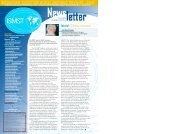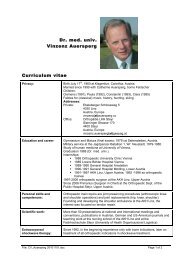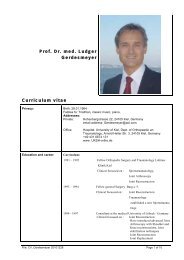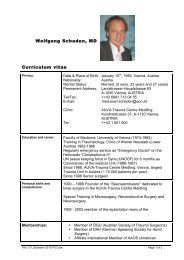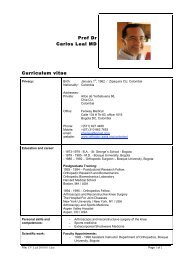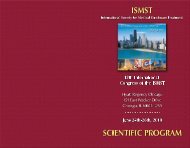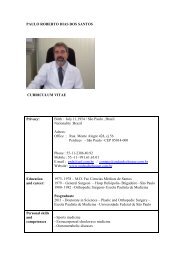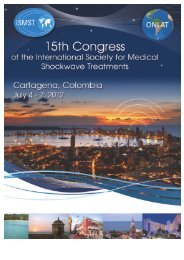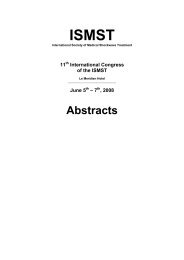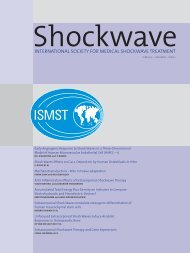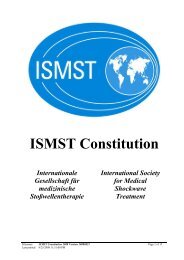Abstracts - ISMST - International Society for Medical Shockwave ...
Abstracts - ISMST - International Society for Medical Shockwave ...
Abstracts - ISMST - International Society for Medical Shockwave ...
You also want an ePaper? Increase the reach of your titles
YUMPU automatically turns print PDFs into web optimized ePapers that Google loves.
<strong>Abstracts</strong><br />
9. Low Energy Extracorporeal Shock Therapy as a Treatment <strong>for</strong> Chronic Patellar Tendinopathy<br />
John Patrick Furia(1), Jan Dirk Rompe(2), Angelo Cacchio(3), Nicola Maffulli(4)<br />
Institution:<br />
1 SUN Orthopedics and Sports Medicine, Lewisburg, PA, USA<br />
2 OrthoTrauma Evaluation Center, Mainz, Germany<br />
3 Dept. of Physical Medicine and Rehabilitation, University of Rome “La Sapienza”, Italy<br />
4 Centre <strong>for</strong> Sports and Exercise Medicine, Barts and the London School of Medicine and Dentistry,<br />
Queen Mary University of London, London, Great Britain<br />
Device and producing company: DolorClast, EMS<br />
Introduction: The pathologic changes seen in chronic patellar tendinopathy are similar to those of other overuse injuries of<br />
tendons. Extracorporeal <strong>Shockwave</strong> Therapy (SWT) is an effective treatment <strong>for</strong> many tendinopathic conditions.<br />
Methods: Thirty-three patients with chronic patellar tendinopathy received low-energy SWT (2000 shocks; 4 bars of<br />
pressure, total energy flux density, 360 mJ/mm2). Thirty-three patients with chronic patellar tendinopathy were treated with<br />
additional <strong>for</strong>ms of non-operative therapy (control group). Evaluation was by change in visual analog score (VAS), Victoria<br />
Institute Sport Assessment Score (VISA), and by Roles and Maudsley (RM) score.<br />
Results: Mean pre-treatment VAS scores <strong>for</strong> the control and SWT groups were 7.5 and 7.8, respectively. One month, 3<br />
months, and 12 months after treatment, mean VAS <strong>for</strong> control and SWT groups were 6.7 and 4.3 (pp001), and 54.9 and<br />
74.5 (p the number of excellent, good, fair, and poor results <strong>for</strong> SWT and control groups were 8 and 3 (psis showed that<br />
the percentage of patients with excellent (“1”) or good (“2”) RM scores (successful results) 12 months after treatment was<br />
greater in the SWT group compared to the control group.<br />
Discussion: Traditional treatment of chronic patellar tendinopathy is generally lengthy, associated with frequent recurrences,<br />
and in many cases, results in an unacceptable degree of improvement. This study demonstrates that low energy, radial<br />
SWT is safe and effective, that it can be used to treat patients with chronic patellar tendinopathy, and that satisfactory<br />
improvement is maintained <strong>for</strong> at least one year.<br />
Conclusion: SWT is an effective treatment <strong>for</strong> chronic patellar tendinopathy.<br />
15



